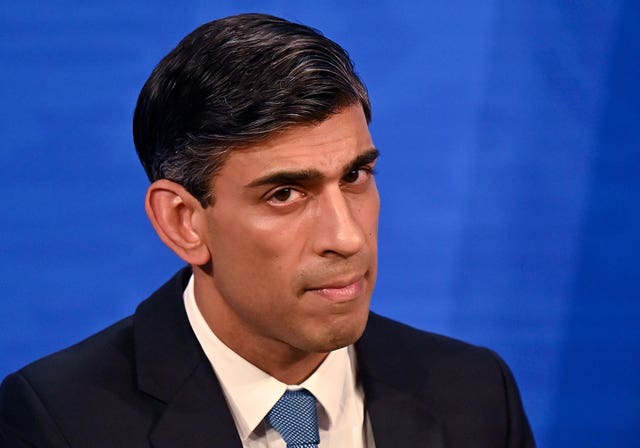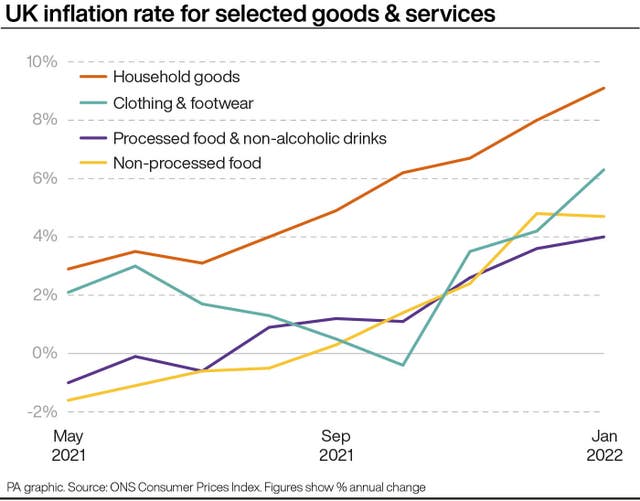
Henry Riley 7pm - 10pm
16 February 2022, 12:44

Inflation reached a fresh 30-year high of 5.5% in January and is predicted to hit 7.25% in April.
Households are facing the highest inflation for nearly 30 years and more pain is on the horizon with rocketing energy bills and a tax hike due this spring.
Calls are growing for the Government to do more to tackle the cost of living squeeze, including axing April’s planned national insurance increase.
What is driving rocketing inflation, what action is being taken and what can we expect over the next few months?
– Why is everything more expensive?
Covid-19 has hit global supply chains with a combination of pent-up demand and delays to shipping as factories across the world face lockdowns and worker absences.
This has led to prices rising, particularly for raw materials.

Food prices have also risen as wages increase, including for HGV drivers due to recent shortages and with thousands of drivers leaving the UK to return to their home countries in the EU.
But the biggest driver of inflation is eye-watering energy tariff rises after wholesale gas prices shot up by about 500% in 2021, as well as record costs at the petrol pumps from hikes in oil prices globally.
Ofgem recently announced it will increase the energy price cap by 54% in April, adding nearly £700 to annual gas and electricity bills, with a further increase expected when it is next reviewed in October.
– Will inflation remain high?
Consumer Prices Index (CPI) inflation is currently running at 5.5% as of January, but the Bank of England has warned inflation will rocket to 7.25% in April – the highest level since August 1991.
It is hoped that inflation will start to fall back in the second half of 2022, though it will not be until next year that CPI gets back to the bank’s 2% target.
– What other costs can I expect to increase this year?
The Bank of England has warned that household income, after taking account of inflation, will plunge by 2% in 2022 – the sharpest drop since records began in the late 1940s.
Along with rising energy bills, there is also a one-year 1.25% national insurance rate rise due in April to help pay for social care and NHS funding.
This comes as official figures have revealed that wages are already failing to keep up with rises in the cost of living, increasing by 4.3% in the most recent quarter – far below the rate of inflation.
Food retailers are also starting to pass on higher costs to consumers, with inflation firmly hitting the supermarket shelves.
– What is being done to tackle soaring inflation?
The Bank has increased interest rates twice in the past three months to rein in rocketing inflation, with the latest rise to 0.5% earlier this month marking the first back-to-back hike since 2004.
It has also signalled that more rises are on the way and experts believe the base rate could hit 1% in May.

– What is the Government doing to help?
Chancellor Rishi Sunak has so far resisted calls to scrap the April tax hike.
Instead, earlier this month he announced a support package including a state-funded £200 discount on energy bills in October, which households will eventually have to repay.
The Government is also offering a £150 council tax rebate from April that will benefit 80% of households.
– Will this be enough to help offset the cost-of-living squeeze?
There are concerns that the measures will not be enough to help and Labour is leading demands for more action.
As well as ditching the tax hike, Labour has also called for a windfall tax on oil and gas firms which have benefited from soaring global prices in order to help fund a cut in consumers’ energy bills, but this has been dismissed by the Chancellor.